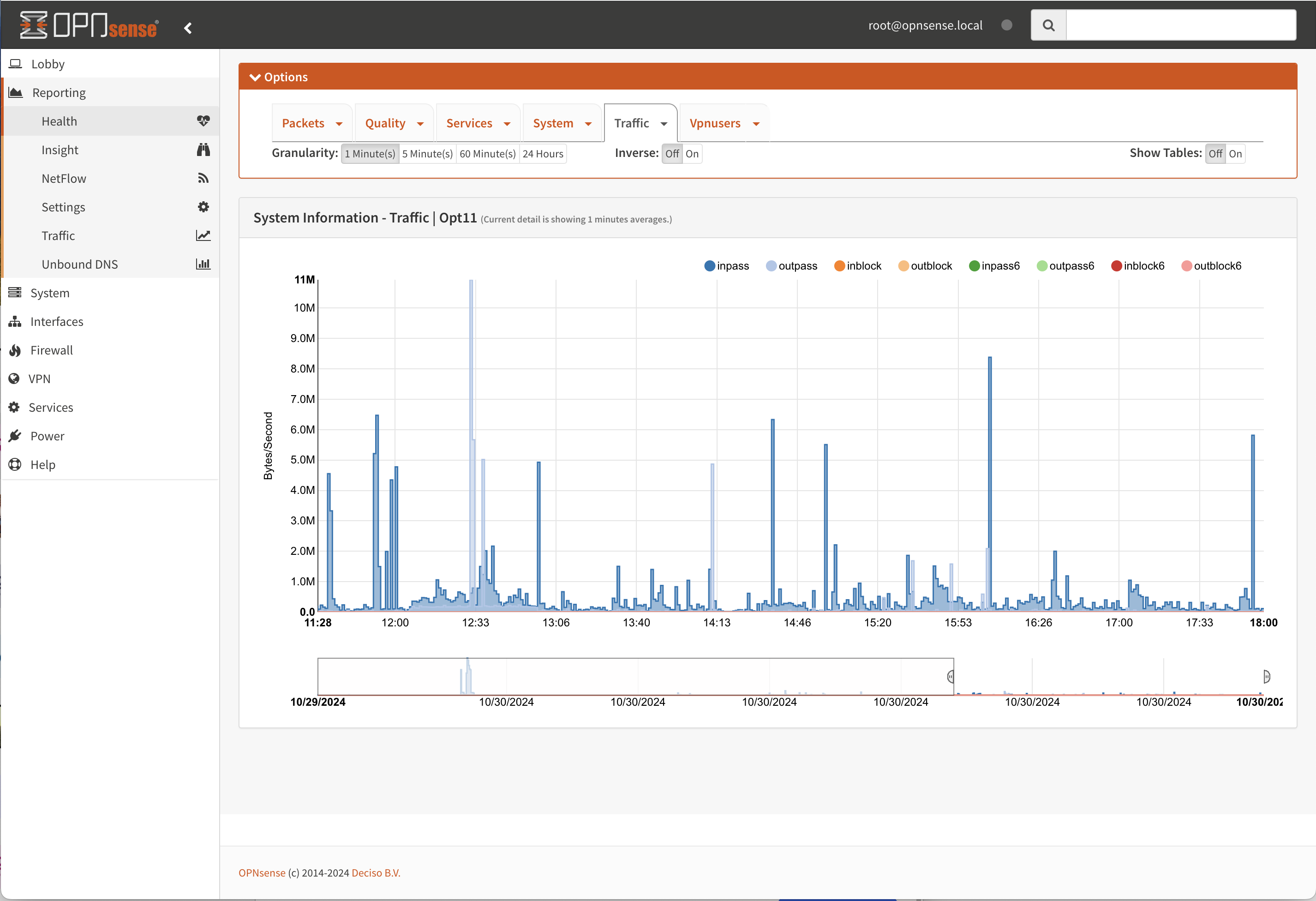Introduction
Welcome to the OPNsense documentation & wiki project! The documentation is a work in progress and is updated frequently. If you would like to contribute in any way, please take a look at our guide on how to Contribute.

Welcome to OPNsense’s documentation!
OPNsense® is an open source, easy-to-use and easy-to-build FreeBSD based firewall and routing platform.
OPNsense includes most of the features available in expensive commercial firewalls, and more in many cases. It brings the rich feature set of commercial offerings with the benefits of open and verifiable sources.
Mission Statement
Give users, developers and businesses a friendly, stable and transparent environment. Make OPNsense the most widely used open source security platform. The project’s name is derived from open and sense and stands for: “Open (source) makes sense.”

Reading guide
While reading the documentation, it is good to know how the various topics are structured, what their purpose is and how to find what you are looking for. Maybe even more important is what this documentation does not offer.
If you are looking for deeper insights about networking and best practices in designing them, this might not be the best place to look. Most of our documents and how-to’s focus on how to use functionality included in our software and/or one of its plugins. Quite a lot of books are written about networking, there are (online) courses available and Wikipedia contains a lot of relevant articles as well. Some interesting reads include the fundamentals about the OSI model, IP addressing, routing and network address translation. These resources are likely more suitable for learning about general network concepts. Although we do try to include some context in our documents, there are often assumptions made about the readers knowledge on (basic) networking.
Like many products and projects, ours grows over time, functionality extends and changes, which sometimes makes it difficult to find what you need for the version you are using. Although we try to keep our documentation up to date, sometimes its contents do not reflect reality anymore. If that is the case and you think you found an omission, do not hesitate to open a report using one of our templates on GitHub or a pull request if you are able to.
Always assume the text is intended for the latest version of our product, in time we might add a version selector in the documentation, but given OPNsense is a security product, we advise to keep it up to date anyway to protect yourself against the latest threats.
The releases section contains the changelogs for all versions we published over the years, if there are remarks for an upgrade, this is a useful resource to collect the details.
Installation and setup is all about getting you started using one of the target options available.
The next sections should be quite familiar when working with OPNsense, as they reflect the options in the product’s menu. If you are not yet used to OPNsense, you can always use the search input in the top-left corner of the screen to find your topic.
Both community and third-party plugins have their own area available, although they eventually register into the same menu structure, it is good to know about possible differences between add-ons and standard functionality. The level of support may differ between core functionality, as also explained in the “Support options” section, feature requests and bugs may be treated different as well (a lot of questions for a plugin which is being developed by a single person, maybe less active than a group of people improving a plugin together for example).
When it comes to building software on top of OPNsense or extending existing functionality, the development chapter is the one to read. It explains all about our architecture, coding style, how to hook into available facilities and much more.
Some pointers when it comes to troubleshooting can be found in the section with the same name, it explains a bit about our issue workflow and some tips we collected over the years.
Last but not least our documentation includes some pages around project relations, legal guidelines and ways to contribute to the project.
Feature set
The feature set of OPNsense includes high-end features such as forward caching proxy, traffic shaping, intrusion detection and easy OpenVPN client setup. The latest release is based on a recent FreeBSD for long-term support and uses a newly developed MVC-framework based on Phalcon. OPNsense’s focus on security brings unique features such as easy to use one time password authentication for various components.
The robust and reliable update mechanism gives OPNsense the ability to provide important security updates in a timely fashion.
OPNsense Core Features
Traffic Shaper
Captive portal
Voucher support
Template manager
Multi zone support
Forward Caching Proxy
Transparent mode supported
Blacklist support
Virtual Private Network
Site to site
Road warrior
IPsec
OpenVPN
High Availability & Hardware Failover
Includes configuration synchronization & synchronized state tables
Moving virtual IPs
Intrusion Detection and Inline Prevention
Built-in support for Emerging Threats rules
Simple setup by use of rule categories
Scheduler for period automatic updates
Built-in reporting and monitoring tools
System Health, the modern take on RRD Graphs
Packet Capture
Netflow
Support for plugins
DNS Server & DNS Forwarder
DHCP Server and Relay
Dynamic DNS
Backup & Restore
Encrypted cloud backup to Google Drive and Nextcloud
Configuration history with colored diff support
Local drive backup & restore
Stateful inspection firewall
Granular control over state table
802.1Q VLAN support
and more…